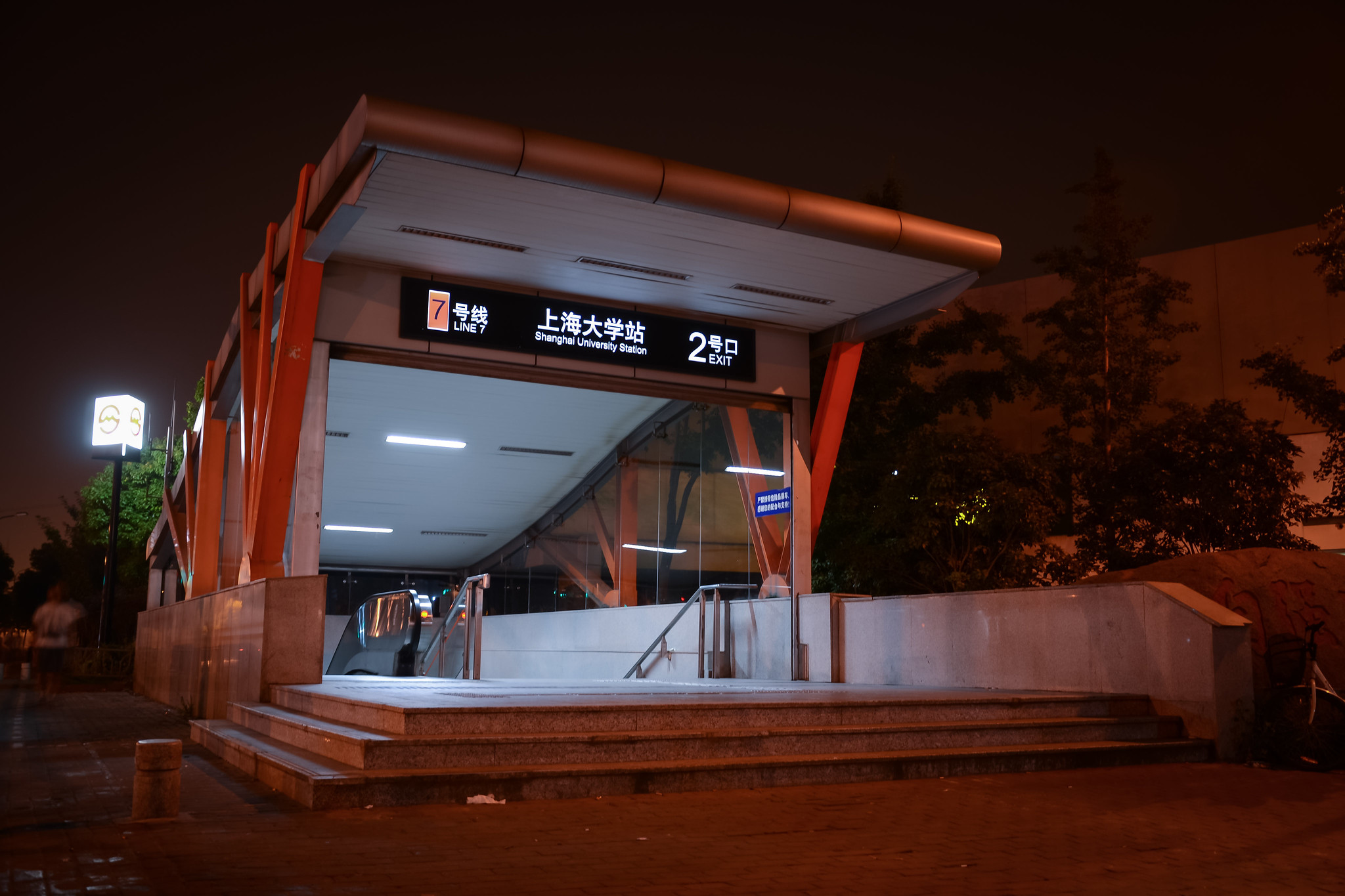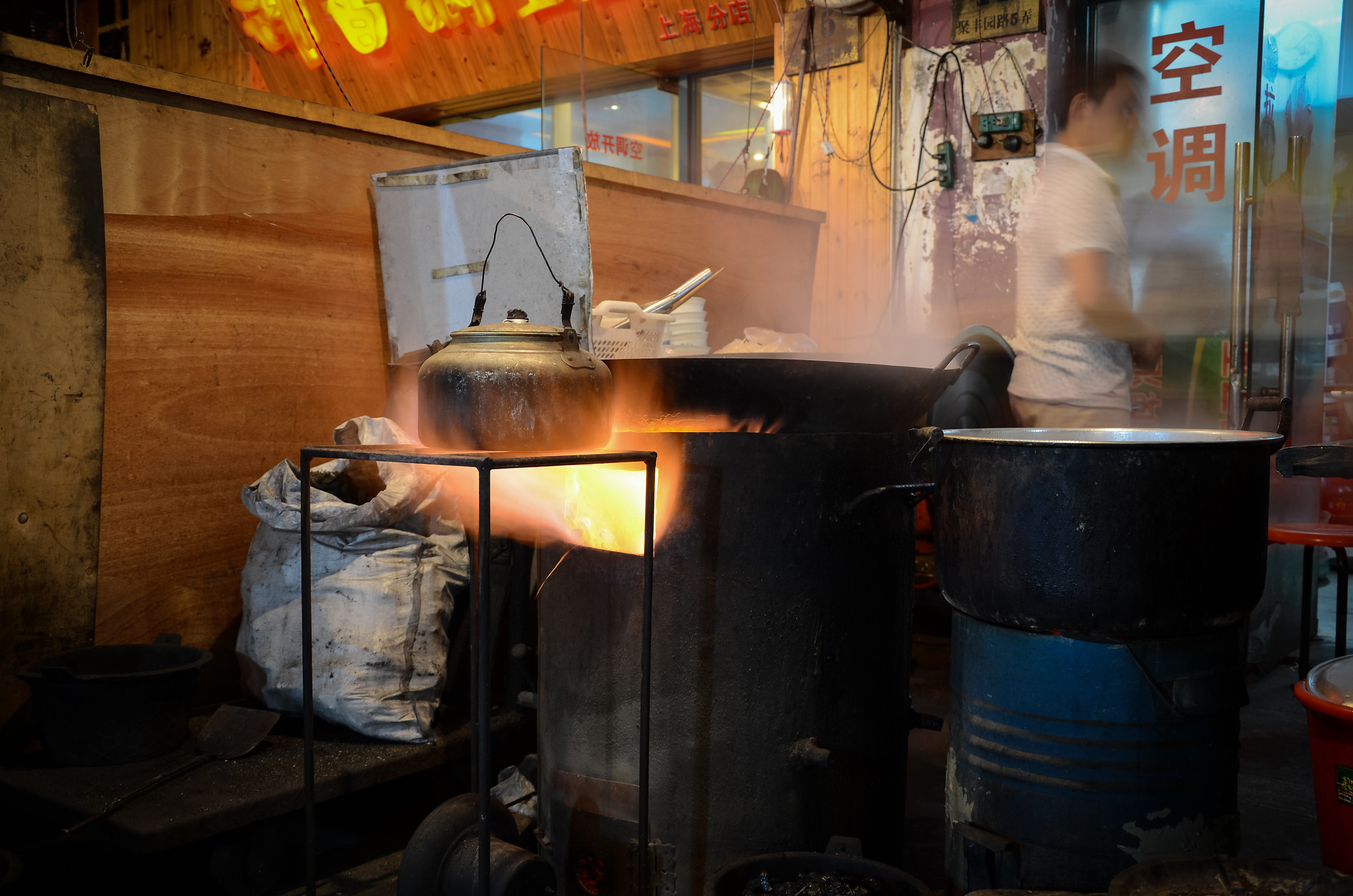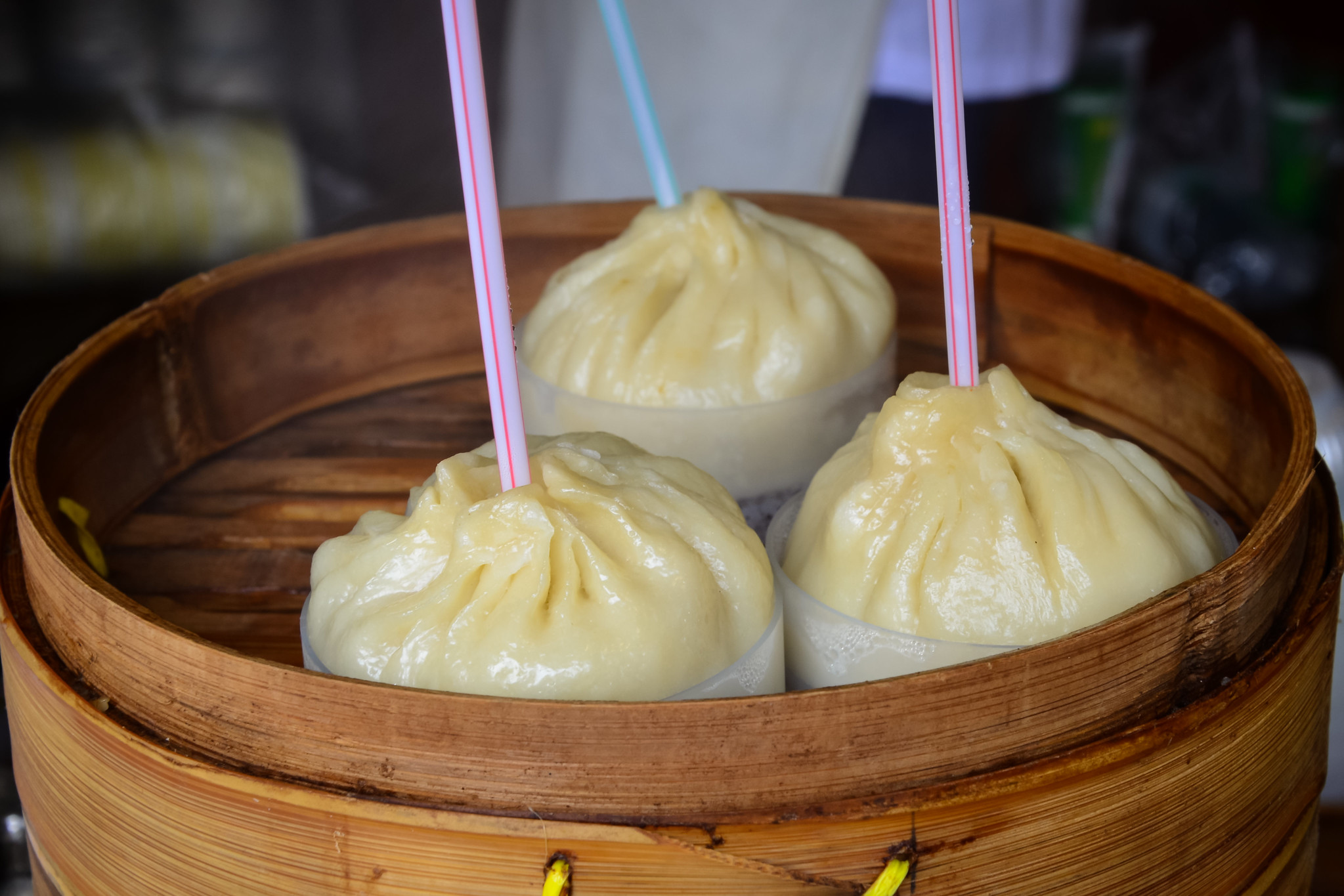During the summer, when I told people that I was going to (or recently returned from) Shanghai, I was often immediately asked about food, and sometimes specifically about street food.
If you know much about me, then you know that I’m a food utilitarian. I eat for calories. I simply don’t care much about food beyond sustenance. This does not mean that I don’t enjoy food; I do. I enjoy the things I eat every day so much that I eat almost the same things, every day. But I am no foodie.
I will try almost anything, and Shanghai presented many opportunities for new culinary experiences. About the only thing I had that was challenging was stinky tofu during breakfast. Served cold, this everyday snack actually smelled fine to me—and was quite wonderful when it hit my tastebuds. On it’s way down my esophagus, however, it exploded in a kind of fermented, spicy, heartburny miasma. Despite that, I’d probably try it again…
As it turned out, just outside the West Gate of the Baoshan campus of Shanghai University, about a 1.5 mile walk from where I stayed and taught, is Jufengyuan Road, and area that Shanghaiist calls one of Shanghai’s street food meccas. I came to know this area well, visiting daily.
As the Shanghaiist post notes,
The actual Jufengyuan strip isn’t even the main attraction with its fruit wagons, skewer carts, etc. The real deal begins at the alleyway just right of the bridge connecting Shanghai Uni’s west entrance to Jufengyuan Lu - identifiable by the covered picnic tables, shrouds of steam, and scraping of woks. Here, you’ll find fried noodles and rice galore, shawarma, skewers, Chinese breakfast crepes aka jianbing , fried chicken, and our favorite, big Xinjiang skewers with ribs, chicken legs, and other animal parts spitted on medieval-looking metal swords.
This area is amazing. The smells, the open flames, the masses of people moving about carrying xialongbao and sizzling chicken and steaming soups—it’s essentially what I envisioned when conjuring the phrase “Shanghai street food,” and it was incredible that I was within walking distance for two weeks. And while I came to appreciate one stall’s very spicy noodles, I was much more interested in simply being there than in sampling all of the food on offer—the street food scene along Jufengyuan Lu was atmospheric, enveloping, all-encompassing.
At this point, I want to write a few words about my experiences with street photography in Shanghai before I share some photos of the street food scene…
I never felt unsafe during my brief time in Shanghai, even though I stumbled into areas of the city where tourists and laowai are rarely seen. However, there were a couple encounters that I’d describe as “dicey,” and each involved my use of a camera at the time.
I’m fairly conspicuous as a street photographer; I love to shoot in low light and at night, and I’m a stickler for sharpness and legibility. This means that I typically stand out—with a big Manfrotto tripod, a Nikon D7000, a wireless shutter release, and a tendency to shoot low angle, wide frame shots. In other words, people can easily see what I’m doing, and in the process, they may become curious, shy, amused, etc.

This shot, for example, was taken in front of about 25 scooter taxis and their drivers—to the left of frame, and behind the camera—all facing me as I set up, and all watching me with interest. This was photography in front of an audience, and after I made a couple of acceptable shots, I moved along the crowd, showing everyone the resulting images. It was both odd and fun.
But I take few “candid” or furtive street shots. If you see close-up, legible images of people in my street photographs, there’s a very, very strong chance that I asked for permission before shooting. So, in touristy areas like The Bund, nobody cared about my photographic activities. But in a locals area like Jufengyuan Lu, as an obvious laowai with a camera and tripod, I stuck out.
On several occasions in Shanghai, therefore, my conspicuousness was potentially positive or negative (for me, and others). Folks often would set up behind me—squatting down or leaning over my shoulder—as I framed a shot on my tripod, essentially trying to see what I was photographing. When I noticed this, I’d show people my shot, so they could see my results. Then we’d exchange thumbs up or down signs, smiles, shrugs, or frowns depending on what people thought of a given photo.
But on a couple of occasions, people were visibly upset by something I’d done with my camera. The diciest situation occurred just after I’d shot this photo, one of my favorites from the trip:

To the left of the frame, Jufengyuan Road moves out into the distance—a pedestrian, bike, and scooter thoroughfare with major chains (Wal-Mart, KFC), local shops, banks, apartments, etc. Just to the right of the frame is the entrance to the street food mecca.
For me, this fruit stand is visually lovely. I’d purchased cantaloupe skewers here on a couple occasions, and at night, it makes a fantastic photographic subject.
I shot this in the street, about 20–30 feet away from the stand. My tripod was low, the camera perhaps 30 inches above the ground. The woman working the stand moved in and out of frame as I was setting up the shot, and my intention was simply to capture her movement—a blur in the long exposure. In other words, I was shooting the scene—the well-lit stand, the movement of people nearby, the colorful fruit—rather than a portrait.
A man—probably in his 40s or so, shirtless (it was hot and humid), and a bit bigger in stature than I—set up behind me as I framed the shot, clearly skeptical and uneasy. After shooting it, I turned to him, gesturing back toward the camera, indicating as best as I could that I wanted him to look.
Finally, I picked up my camera and held the shot up for him to see. He was pissed. I’m not at all sure why, but he started screaming at me there in the street. He’s yelling in Chinese, I’m offering in English to delete the image, and no one nearby was able to mediate. Finally, he gave me a dismissive wave and I headed off down the street, quickly, hearing a few farewell yells, without taking another shot.
I feel bad, as I clearly did something to cause offense. But I also couldn’t tell if this was the kind of man who often yells at people on Jufengyuan Road. Because of this ambivalence, I kept the photo.
The rest of the photos were shot in the alley, with permission. I returned another night to shoot these, but I was still skittish; I ended up shooting far less here than I would have liked.

This photo is the poorest of the bunch, but it gives a sense of the stalls in the alley. From this view, I am about 2/3 of the way down the alley, so we’re seeing only the final few stalls along the vanishing point. To the right of frame are tables and many, many patrons enjoying their food.

At this stall, a family—a grandmother, son, daughter (or daughter-in-law), and grandchild—were very accommodating, and they really liked the shot after I showed it to them. The huge wok and open flame caught my eye, but I’m really pleased with the little details here—the shovel in the bottom left, the dividing paneling, the electrical sockets and peeling paint. A perfect environment for street food!

This image is intentionally dark; to the left of frame, a line stretched easily twenty people deep. The single bulb illuminating the workspace caught my eye.


Finally, a couple of the few food close-ups I shot, before and after.

2 comments:
I just read about dumplings with soup inside -- is that the subject of your final picture?
@Jess Yep—that's it exactly!
Post a Comment